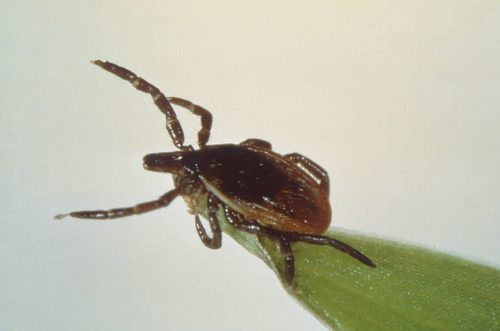Local lore in Connecticut names Plum Island, the home of a high security government laboratory, as the source of Lyme disease. The controversial theory claims that infected ticks were accidentally released from the facility in the early 1970s. The truth, however, may be more compelling. Recent research, led by Dr. Katherine Walter of the Yale Department of Epidemiology and Microbial Diseases, suggests that the pathogen has existed quietly for around 60,000 years. Furthermore, it may be human impact, not scientific meddling, that has caused the sudden surge in sickness.
Strange things appeared to be afoot in Lyme, Connecticut during the summer of 1976. The town had experienced a record number of juvenile arthritis cases that year, which puzzled many physicians and researchers. To make matters worse, complaints of severe joint pain, headaches, and fever were spreading like wildfire. What had begun as an isolated incident swiftly transitioned into a widespread phenomenon, affecting adults at the same rate it has children.
The mysterious symptoms were later all classified under one ailment: Lyme disease. Named for the town first believed to be its epicenter, Lyme is now reported to be the most common vector-born disease in the United States. According to the Center for Disease Control and Prevention, there were over 28,000 confirmed cases in 2015 alone. To examine the spread of Lyme however, one must first examine its vector, the blacklegged tick.
When one thinks of ticks, the connotation tends to be quite negative. These small parasites are the often invisible threat associated with outdoor activity in the late summer and fall. Their resemblance to spiders, with which they share the same subclass, is equally unnerving. What makes the blacklegged tick potentially dangerous however, is the pathogen it carries. First clinically described in 1982, Borrelia burgdorferi is one of the few bacteria that seems to directly interact with the cell tissues it infects, rather than producing a microbial toxin. It also has an extremely low rate of replication, which allows it to remain undetected in a host for some time. This creates difficulties in prescribing treatment, as many patients are unaware of the infection until it becomes chronic.
Although researchers now have an understanding of the effects of a B. burgdorferi infection, little is known about its evolutionary origins. Additionally, it is still unclear why the United States has seen such a rapid increase of Lyme in the past 30 years. Dr. Walter and her team at Yale have attempted to expand the current understanding the bacterium. Walter became interested in the pathogen’s history while a graduate student in the Yale Department of Epidemiology and Microbial Diseases. “Looking at molecular evolution is like looking at records,” says Walter. “Often, the records for infectious diseases are incomplete.” Her research team attempted to explain the sudden surge of illness by examining the genome of B. burgdorferi, using data compiled from nearly thirty years of fieldwork.
The results of the research proved to be astonishing. They suggested that B. burgdorferi has been present in the northeastern United States for around 60,000 years. This differs from the original theories, which tend to focus on evolutionary change or pathogen introduction as the cause of its emergence. Furthermore, the findings point to human activity as the leading factor in Lyme’s dispersal.
To put this into perspective, imagine the northeast 60,000 years ago. It did not contain the vast expanse of cities and roadways characteristic of today. The landscape was likely composed of forests and thick underbrush, making it an oasis for ticks. Urban development and industrialization have greatly infringed upon the habitat of the animal hosts, and therefore, of the tick. In addition, climate change has contributed to consistently warmer seasons, which in turn have afforded ticks a longer lifespan. Ironically, while global warming may prove detrimental to humans, it will promote the survival of parasites. Increased vigor, as well as sustained migration, will continue to broaden the scope of Lyme disease in the near future.
There is, however, a glimmer of hope. A research team from the Cary Institute of Ecosystems found that ticks seem to dislike dry weather. Nymphs, the intermediate stage in a tick’s lifespan, experience more difficulty securing hosts in arid conditions.
If the United States continues to see a decrease in annual precipitation, it may also see a decline in the prevalence of Lyme disease. For now, scientists like Walter and her team will continue to track and study the disease, helping us better understand our relationship with the environment around us.

